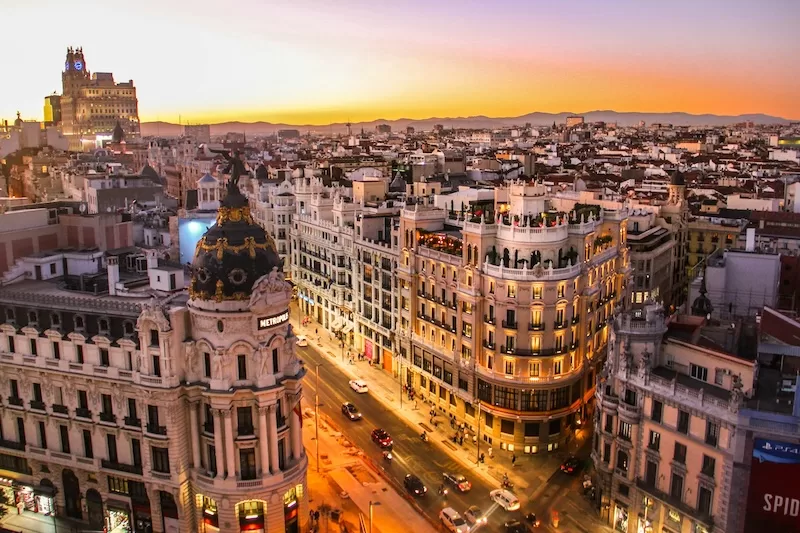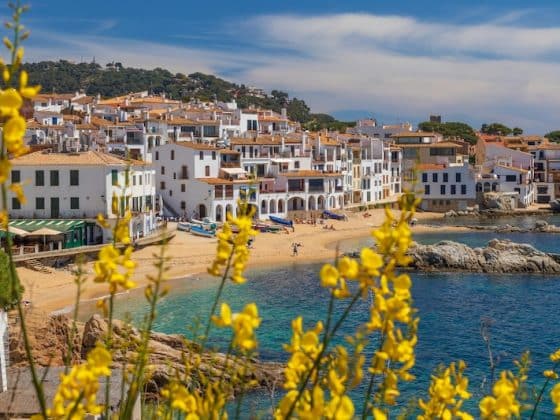Introduction
Spain draws millions of people each year (from tourists to expats) with its sunshine, vibrant culture, and relatively affordable lifestyle. But how much does it really cost to live there? Whether you’re moving for work, retirement, or as a digital nomad, understanding the cost of living in Spain is essential before you pack your bags.
In this guide, we’ll break down typical expenses, regional differences, and smart strategies to manage your budget, all grounded in recent data and real-world examples.
What Determines the Cost of Living in Spain
Every individual’s cost will differ, but these are the key factors:
- Location: Big cities cost more than rural or smaller coastal towns.
- Housing preferences: Living in a city center vs outskirts, or in shared housing vs private flats.
- Lifestyle choices: Dining out, travel, entertainment, and shopping habits.
- Consumption habits: Utility usage, vehicle or public transit, heating/air conditioning.
- Family size or dependants: More people means more expenses in groceries, schooling, housing.

Typical Monthly Costs (2025 Estimates)
Spain continues to rank among the most affordable countries in Western Europe, striking a rare balance between quality of life and everyday costs. According to the latest data from the Instituto Nacional de Estadística (INE), and based on national averages that skew towards local households, monthly expenses now sit around €1,093 per person or €2,718 per household, the highest levels recorded in the past decade, yet still well below most European peers. These 2025 averages give a clear picture of what it takes to live comfortably in Spain, from single professionals to growing families.
Single Person Budget
For a comfortable but not extravagant lifestyle, expect to spend:
- €1,300 to €2,200 per month including rent in most cities.
- €700 to €1,200 per month excluding rent, depending on your habits and city size.
- This range typically covers food, transportation, entertainment, and daily essentials.
In smaller inland cities such as Granada, Murcia, León, or in rural towns, you could live comfortably closer to €1,000–€1,300 including rent. In contrast, Madrid and Barcelona sit at the higher end, where living alone can easily exceed €2,000 per month.
Couple or Family Budget
For couples or small families, shared costs help, but housing and childcare quickly raise the total.
- €2,500 to €3,500+ per month including rent, depending on location and lifestyle.
- For a family of four, the range typically runs from €3,000 to €4,200 per month including rent, depending on city, school choice, and activities.
- Families with children in international or private schools should budget €4,000–€5,000+, especially in urban areas.
These numbers reflect a moderate lifestyle with comfortable housing, occasional dining out, and domestic travel. Households prioritizing larger apartments, imported products, or luxury services will naturally spend more.
Breakdowns by Expense Category
Let’s zoom into each major cost bucket to see what drives the numbers behind the cost of living in Spain.
Housing & Rent
Housing shapes your Spanish budget more than any other expense, and the contrast between city and countryside is huge. In Madrid or Barcelona, a one-bedroom apartment in the city center can easily run €900 to €1,500 per month, depending on size, neighborhood, and access to transport. Step outside the center, and rents start to ease into the €600 to €1,000 range, often with more light, quiet, and better value for the space.
Head south to Andalusia or east to Valencia, and you’ll find friendlier numbers. A similar apartment in Seville, Málaga, or Valencia often falls between €700 and €1,000, while smaller inland towns like Granada, León, or Cáceres still offer decent homes for €400 to €700 a month.

Read More Like This: Top 5 Cities for Expats in Spain
Madrid is a bit like Paris or London: cosmopolitan, dynamic, and always a little pricier than the rest. For those who can work remotely, smaller coastal or inland towns offer real savings and a slower rhythm that many expats find more rewarding.
Utilities & Internet
Electricity, gas, water, and trash collection typically add €100 to €150 per month to your household costs. Winter heating can nudge bills higher in northern regions, while summer air conditioning does the same down south. Internet plans hover around €25 to €40, and mobile phone packages add another €15 to €30, depending on data and provider.
Spain’s utility costs are close to the Western European average: not cheap, but predictable. Some older apartments may have less insulation, which can make heating or cooling pricier. It’s worth checking energy efficiency ratings when choosing a long-term rental.
Food & Groceries
Groceries in Spain are relatively affordable, especially if you stick to local produce and shop in neighborhood markets. A single person usually spends €200 to €300 per month on groceries, while a couple might spend €400 to €600. Weekly markets often beat supermarket prices, especially for fresh fruit, vegetables, fish, and cheese.

Dining out, on the other hand, can be tempting and inexpensive compared to northern Europe. The beloved menú del día (three-course lunch menu) often costs just €10 to €15, including wine or coffee. A mid-range dinner for two in a casual restaurant might run €40 to €70, and even in top cities, a cappuccino rarely passes €3.
Spain rewards home cooks and tapas lovers alike. Eating seasonally, buying from local markets, and avoiding imported goods can make your food budget surprisingly light.
Transportation
Spain’s public transport network is efficient, clean, and relatively cheap. A monthly metro or bus pass in most cities costs €30 to €60, depending on zones. In Madrid, for example, a central zone pass costs €54, while smaller cities like Valencia or Seville charge closer to €35.
Owning a car adds significantly to monthly expenses. Fuel prices hover around €1.60 per liter, and when you add insurance, parking, and maintenance, it can total €200–€300 per month. Still, for families living outside major cities or in rural regions, a car can be essential.
Trains and long-distance buses are popular for intercity travel. Spain’s high-speed AVE trains connect Madrid to most major hubs in a few hours, and while not the cheapest option, they’re fast, comfortable, and a great alternative to flying.
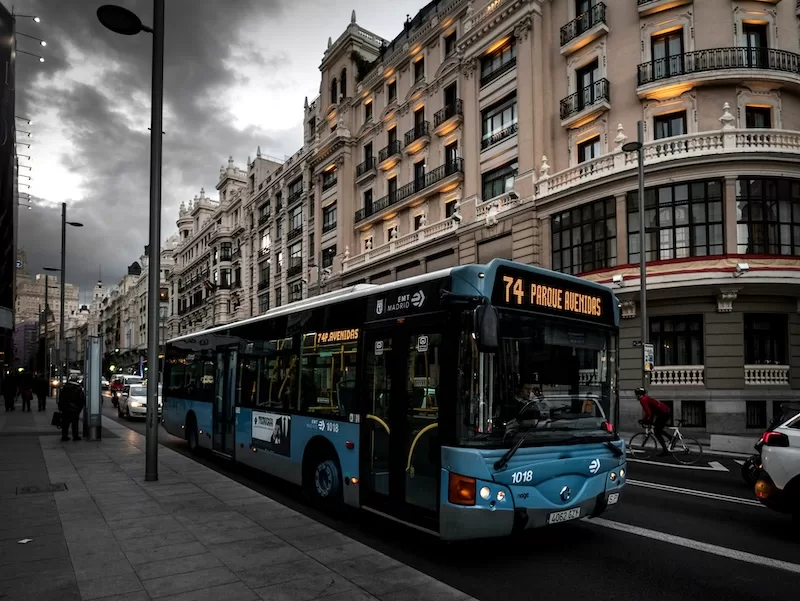
Healthcare & Insurance
Spain’s public healthcare system, Sistema Nacional de Salud, offers excellent coverage for residents, funded through social security contributions. For most expats, the quality and accessibility of public healthcare are major draws. Still, many choose to add a private insurance plan for faster appointments or English-speaking doctors.
Private health insurance starts around €30–€70 per month for individuals and €80–€200 for families, depending on age and coverage. Compared to countries like the U.S. or the U.K., healthcare in Spain remains remarkably affordable without sacrificing quality.
Leisure, Lifestyle & Extras
How much you spend on leisure depends on your habits. A gym membership runs around €30 to €60 per month, a movie ticket about €8, and a night out with tapas and drinks around €25–€40. Spain’s outdoor culture means much of your free time can be spent enjoying things that cost nothing: beach walks, park picnics, or hiking in the nearby sierras.
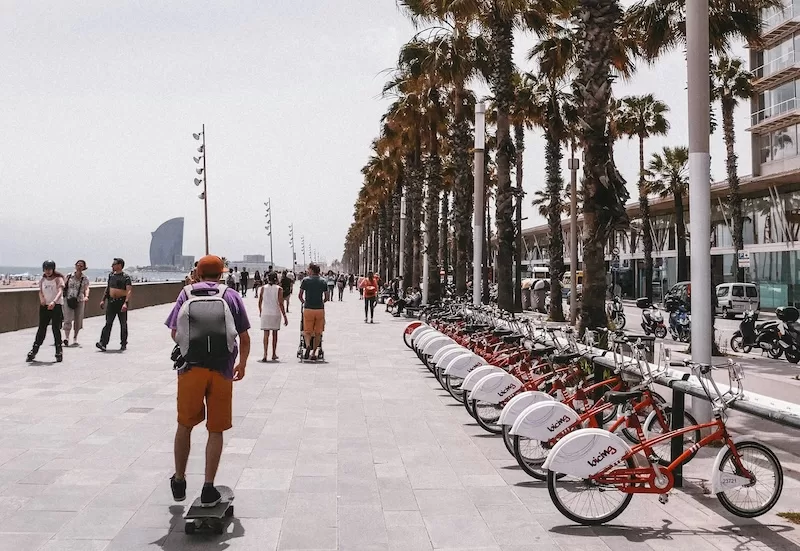
For digital subscriptions, hobbies, or short getaways, budget an extra €50 to €150 per month. Even with these comforts, Spain’s pace of life makes it easy to live well without spending excessively. The real luxury here often lies in time and sunshine, not things.
Education & Childcare
If you have children, this is a significant item. Private schooling or international schools can cost several hundred to over €1,000 per child monthly, depending on quality and location. Public schooling is typically more affordable or free in many districts, but extras (school supplies, uniforms, activities) still apply.
Cost Variation by City & Region
High-cost cities: Madrid, Barcelona
These urban hubs are at the top of the cost scale. Rents, lifestyle costs, and demand drive prices upward. For example, Madrid’s rent index is about 38.2, and Barcelona’s 37.6 (Numbeo). In such cities, a comfortable monthly budget for a single person may lean toward €1,500–€1,800+ or more.
More affordable areas: Andalusia, Valencia, smaller towns
Regions like Andalusia, Murcia, parts of Valencia or Extremadura offer much more modest living costs.
Some examples:
- Málaga and Alicante sit below the national average for rent and food. Both combine beach living with strong expat networks yet remain cheaper than Barcelona or Madrid.
- Granada and Córdoba are Andalusian gems where you can rent a small apartment in the historic center for €600–€800 and enjoy some of Spain’s most affordable dining scenes.
- Murcia City and Cartagena are rising favorites for digital nomads, offering quality apartments for €500–€700 and excellent access to the Mediterranean coast.
- Valencia Province — especially areas like Gandía, Xàtiva, and Sagunto — balances seaside charm and low costs, with rents often 30–40% below Madrid.
- In Extremadura (think Cáceres, Mérida, Badajoz), the cost of living is among the lowest in Spain. Many single expats report living comfortably on €1,000–€1,300 per month including rent.
- Even parts of Castilla-La Mancha and Aragón (like Toledo, Teruel, or Zaragoza) offer affordable housing, great public services, and slower-paced lifestyles without isolation.
In short: the further from major cities (or tourist zones), the lighter your budget can be.
Read more like this: Best Places to Live in Spain: A City-by-City Guide for 2025
Comparison: Spain vs Other Western Countries
Spain often compares favorably to other Western nations:
- Spain’s cost of living is roughly 25–35% lower than the USA overall, and up to 40% cheaper for daily expenses like food and transport.
- With rent included, Spain is significantly cheaper than many U.S. metros.
- Compared to the UK, everyday costs like groceries and dining out are notably lower.
- Among European countries such as France, Switzerland or Germany, Spain tends to offer better value, especially in housing and food.
By way of analogy: living in Spain (outside prime cities) can feel like trading a high-end German or French city for a mid-sized European city, without giving up quality.
Tips to Reduce Your Cost of Living in Spain
Spain rewards those who live like locals. With a few smart habits, you can stretch your euros further without sacrificing quality of life.
1. Move beyond the tourist core
The moment you step outside the historic center, prices drop fast. Cities like Valencia, Seville, or Zaragoza offer the same Mediterranean rhythm at a fraction of Madrid or Barcelona’s cost. Even within those capitals, living in neighborhoods like Carabanchel or Sant Andreu can save you hundreds each month compared to Salamanca or Eixample.
2. Tap into regional markets
Spanish open-air markets (mercados municipales) are your secret weapon. You’ll find fresh produce, bread, and seafood often 20–30% cheaper than supermarkets, especially near closing time when vendors lower prices.Plus, you get to explore the vibrant local markets that make Spanish life so flavorful.
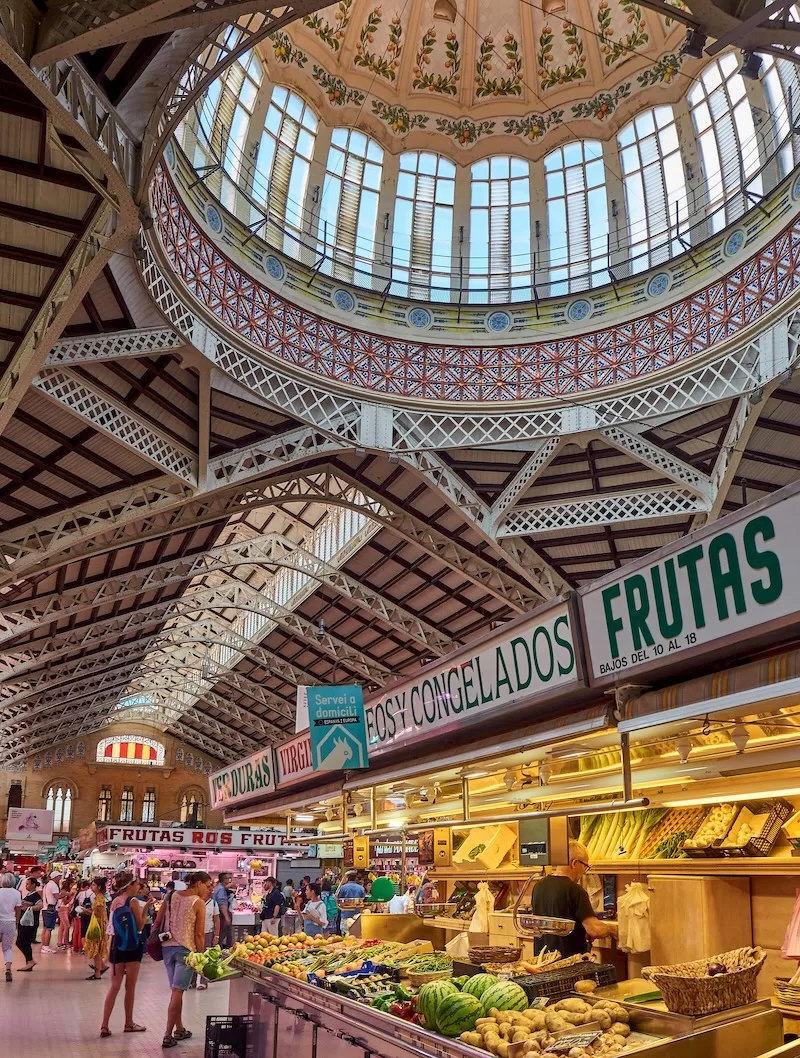
3. Minimize utility consumption
Spain’s electricity prices fluctuate seasonally, so small habits make a big difference. Switch off unused lights, use fans instead of full air conditioning, and hang-dry clothes instead of relying on dryers. Choosing an energy-efficient apartment or checking insulation can also shave off extra costs, especially in older buildings.
4. Cook at home
Spanish groceries are refreshingly affordable. Local produce and pantry staples cost far less than in northern Europe. Preparing meals at home can cut your monthly food budget in half compared to regular dining out.
5. Use public transport or walk
Spain’s cities are built for pedestrians and transit riders. Monthly metro or bus passes range from €30 to €60, and most urban centers have excellent train and tram connections. Owning a car, by contrast, can easily add €200–€300 per month in fuel, insurance, and parking, money better spent on travel or tapas.
6. Leverage local discounts
From supermarket loyalty cards (Carrefour and Alcampo run loyalty cards that grant discounts) to mid-week cinema offers, Spain is full of savings if you look for them. Municipal markets often drop prices near closing time, and discount chains like Mercadona and Lidl make grocery shopping affordable. Keep an eye out for menús del día at restaurants: three-course lunches with drinks included for under €15.
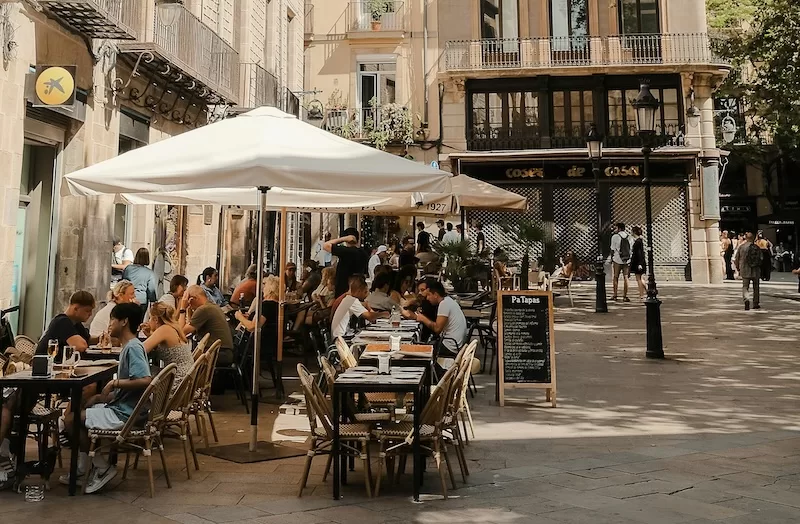
7. Negotiate rent or contracts
Many landlords prefer reliable long-term tenants, which gives you leverage to request lower monthly rates or small upgrades. Signing a 12-month or longer lease often secures a discount compared to short-term rentals. You can also ask for partial furnishings or lower deposits, a common practice, especially in smaller cities.
8. Understand tax rules and local incentives
Spain occasionally offers regional or national subsidies to offset living costs. In 2024, for instance, the government approved a €3 billion relief package that included electricity aid for low- and middle-income households. Understanding your local tax benefits, such as energy-efficient home credits or regional deductions, can save you hundreds over the year.
When You’ll Need More: Inflation, Housing Crunch & Risks
Inflation and rising energy costs can nudge your budget higher, especially during winter. In high-demand zones like Madrid or Barcelona, rental availability is tightening as more properties turn into short-term rentals, pushing prices upward. It’s also easy for ‘comfort creep’ to set in once you adjust to Spain’s laid-back pace. Unforeseen medical expenses, family changes, or lifestyle shifts can also strain your budget, realities that apply in Spain just as they do anywhere else. A 10–15% buffer in your budget helps absorb those surprises without stress.
FAQs
Q1. How much is the cost of living in Spain for a single person?
A comfortable budget (including rent) is typically €1,200 to €2,000, depending on city and lifestyle.
Q2. What does housing cost in Spain?
A one-bedroom apartment in a city center typically ranges from €900 to €1,500 monthly; outside city centers, expect €600–€1,000.
Q3. Are utilities expensive in Spain?
Utilities (electricity, water, etc.) often range from €100 to €150 monthly for typical apartments.
Q4. How does Spain’s cost compare to the U.S. or UK?
Spain is generally 25–35% cheaper in many daily costs and significantly cheaper in rent than major U.S./UK cities.
Q5. Can I live on €1,000 per month in Spain?
Yes. In more affordable towns or with shared housing and a frugal lifestyle, it’s possible (though with limited comfort).
Conclusion & Call to Action
Spain isn’t just a place to live, it’s a rhythm to settle into. Mornings that start with coffee on a terrace. Afternoons that stretch under palm trees or café umbrellas. Evenings that drift lazily into laughter and wine. The cost of living in Spain may fluctuate from city to city, but the value of what you gain — time, calm, and a better balance — stays remarkably constant.
If you’re curious about what life here could look like for you, subscribe to our newsletter. You’ll receive monthly updates on living costs across Spain and other countries, practical relocation tips, and insights from expats who’ve already made the move. Think of it as your personal roadmap to a more intentional, sunlit life, one email at a time.
